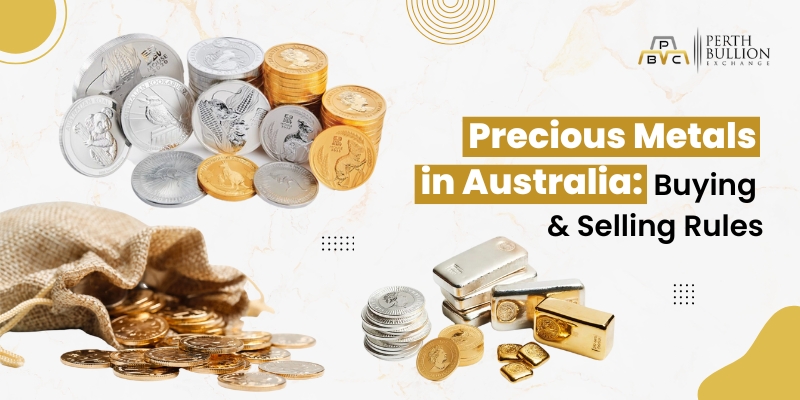Gold vs. Silver in Volatile Markets: Which Metal Offers Better Protection and Returns?
But when market pressure intensifies, which metal performs better—gold or silver? This article explores how each metal behaves in volatile markets, helping investors make more informed decisions.
Understanding Market Volatility
Market volatility is a measure of the extreme and unpredictable movement in asset prices over a short period. This is usually caused by a surge in inflation, an economic recession, or a global shock. The Global Financial Crisis of 2008, the COVID-19 pandemic, and inflationary periods that shook the confidence of investors are some of the significant historical instances.
Gold and silver are some of the most popular safe-haven assets during times of uncertainty. Investors target them to maintain wealth and diversify against asset class depreciation. Their reputation as valuable assets is intact.
Historical Performance of Gold in Volatile Markets
Gold has already gained its reputation as a traditional safe-haven asset, particularly in times of market turmoil. It is also likely to increase in value when equities are declining, inflation is rampant, or geopolitical tensions are high.
As an example, in the Global Financial Crisis of 2008, gold increased by about 25%, whereas the S&P 500 dropped by 38%. Most recently, during the 2020 COVID-19 recession, gold increased by approximately 24% during conditions of extreme market volatility.
Key performance highlights include:
Gold bullion has averaged a 22.03 per cent annualised gain during seven significant crisis periods since 2007, compared to a loss of 5.97 per cent in the S&P 500 and a gain of 5.17 per cent in U.S. Treasuries.
In the past, gold has yielded average returns of 21 per cent in the 12 months after the initial Federal Reserve interest rate reduction.
In 2025, gold has gained approximately 28 per cent year-to-date, hitting new all-time highs as inflation concerns continue to rise, central banks buy, and geopolitical tensions increase.
These statistics show the power of gold as a crisis-hedge and inflation-hedge, which serves as a portfolio cushion in times when other investments have failed.
Historical Performance of Silver in Volatile Markets
Silver is both an investment and an industrial metal. This dual nature makes its price behaviour in volatile markets show the effect of both market speculation and industrial demand. Consequently, silver tends to show greater peaks and greater troughs than gold.
In October of 2008, when the credit crunch hit commodities, silver crashed by 58 per cent during the financial crisis.
Conversely, the 2000s commodities boom had silver rising to about USD 18 per ounce by late 2007, after starting at about USD 4 per ounce in 1992, only to crash during the crisis and then recover in the following years.
In 1980, silver rose to an astonishing 724 per cent in a speculative buying frenzy to a high of USD 49.45 per ounce, only to plummet 50 per cent in a few days when margin buying was limited.
The high volatility of silver means that it is sensitive to macroeconomic shocks as well as industrial cycles. This renders it more speculative with high-return potential as well as risk in volatile times.
Price Stability and Volatility: Gold vs. Silver
Gold is prized for its stability during market downturns. Silver, by contrast, acts as a high-beta version of gold—its price movements are more extreme in both directions.
On average, silver is 2–3 times more volatile than gold on a daily basis.
Both metals are positively correlated, but silver’s greater amplitude makes it more speculative.
Investors seeking stability typically favor gold, while those pursuing greater upside may consider silver—understanding the higher risks involved.
Liquidity and Market Access
Liquid assets are essential in volatile times. Gold enjoys deep international markets and is in high demand in the form of coins, bars, ETFs, and other vehicles. Silver is also very liquid, particularly in standard-intensive forms, although the depth can be form and market-dependent.
Both metals can be obtained via bullion dealers, ETFs, and physical, although premiums and spreads tend to expand when demand is high. The example of gold ETFs has low trading spreads and immediate access to funds, whereas silver ETFs are cheap and easy to trade.
Whether it is gold, silver, or any other metal, investors are advantaged by designing entry and exit strategies in quieter markets in order to achieve the best execution.
Inflation and Currency Hedge Capabilities
Gold has traditionally been considered a hedge against inflation, and it has retained its purchasing power as fiat currencies have declined. Silver is also protective, and it is dependent on the economic condition. Silver has sometimes outperformed gold in stagnatory times, when there is a lot of inflation and the economy is growing slowly, because of the combined influences of industrial and investment demand.
On the other hand, in the case of deflation or crisis, the non-industrial application of gold gives it the benefit of retaining its value. Thus, the two metals protect against currency erosion, but gold is safer in a downturn.
Silver, by comparison, may be more profitable when the economy recovers or there is inflation that crashes into robust industrial demand. The connection of silver with the recovery stages of the economy.
Conclusion
Gold has unrivalled stability and demonstrated its ability to weather a crisis in unstable markets, whereas silver has a higher upside potential, at the expense of risk. Your risk tolerance, investment objectives and market sentiment are key factors to consider when making the best decision.
To get professional advice on how to build a balanced precious metals portfolio, contact Perth Bullion Exchange now and protect your wealth by using the correct mix of metals.



Comments
Post a Comment